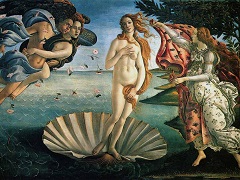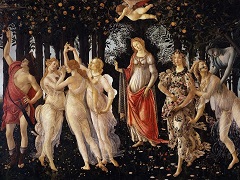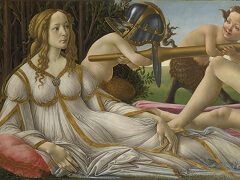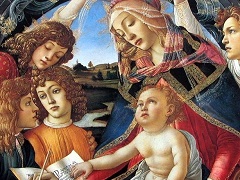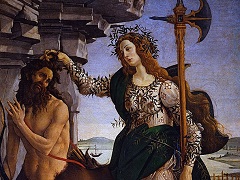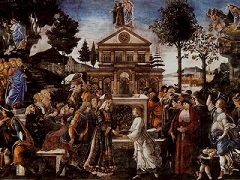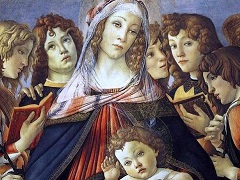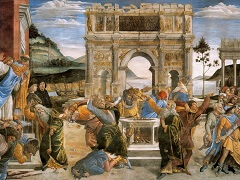Portrait of a Young Woman, 1485 by Sandro Botticelli
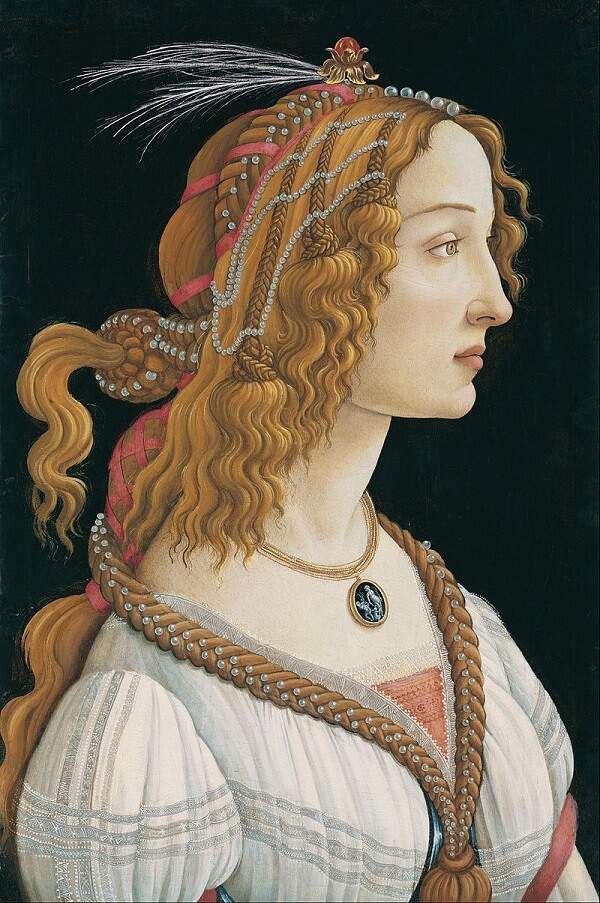
Botticelli created Portrait of a Young Woman between 1480 and 1485. It is an idealized depiction of a beautiful young woman adorned with pearls and wearing a valuable pendant that was in the Medici jewelry collection at the time. The artwork is tempura painted on a wood plank. The painting is also known as "Idealized Portrait of a Lady." Art historians generally agree that the subject is the lovely Simonetta Vespucci, a Florentine noblewoman who died at the age of 23. At one time, she was among the leading beauties of Florence.
Because of the rich adornments she is wearing as well as her elaborate coiffure, experts believe that the artist has created an idealized vision of the young woman. He may even have elevated her to the status of a goddess. One more detail that supports the goddess supposition is Simonetta's medallion, which is called "Nero's Seal." It pictures the Greek god Apollo and the satyr Marsyus, who challenged Apollo to a music contest and lost.
The medallion also strongly indicates the identity of the woman pictured. Although she married at 16, she was also the mistress of Guiliano de'Medici. As sons of Florence's most powerful family, Guiliano and his brother Lorenzo ruled the city at the time of the former's death in 1475. Incidentally, Botticelli worked under the patronage of the Medicis and also painted a portrait of Guiliano de'Medici.
Botticelli never married and some believe that this painting arose from his unrequited love for Simonetta Vespucci. He had also asked that he be interred at the foot of her grave when he died. Simonetta Vespucci has been the subject of many other Botticelli works: Primavera, Mars and Venus, and The Birth of Venus.
With his depictions of Classical Greek scenes and figures, Botticelli made a departure from the ubiquitous Renaissance religious themes in art. Although the master did paint significant religious subjects, such as Cestello Annunciation and Adoration of the Magi, Botticelli's originality in reprising mythological subjects is notable. He worked as an assistant to Michelangelo on the Sistine Chapel Ceiling, but the acclaim for the project all went to Michelangelo. With so many masters receiving public kudos during the Renaissance, Botticelli's genius would be overshadowed for centuries to come. Because Botticelli sometimes set his own course in terms of subject matter in his own work, including Portrait of a Young Woman, more conventional paintings became the stars of the era. However, art collectors took up Botticelli's works in the late 19th century, and the art world began taking notice. Today, Portrait of a Young Woman shares acclaim alongside the works of Leonardo da Vinci and Michelangelo as an example of the best artwork to emerge from the Italian Renaissance. It holds an honored place in Stadel Museum of Frankfurt, Germany alongside with Rembrandt's Paintings and the masterworks of such revered painters as Van Eyck, Fra Angelico.

